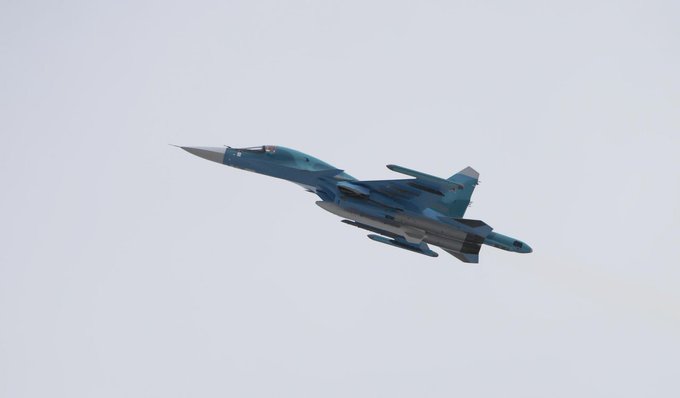Last month, Ukrainian President Vlodomyr Zelensky told the world in a desperate tone how Russia used almost 400 KAB glide bombs against Ukraine in just one week. "No country in Europe could have withstood such pressure and evil alone," the President said while seeking global support.
A month later, the Kremlin has only advanced. Thanks to the use of long-range glide bombs, Russian forces have managed to pound Ukrainian defences in multiple sectors, gaining ground west of the battlefield city Avdiivka.
The Russian Air Force is lobbing 100 glide bombs a day on Ukrainian positions along the 600-mile front line, prompting Ukraine to acknowledge that the KAB glide bombs are indeed a "miracle weapon" for the Russians.
"These bombs completely destroy any position. All buildings and structures simply turn into a pit after the arrival of just one KAB. And they drop 60-80 pieces on us in one day (!!)," wrote Egor Sugar, a trooper with the Ukrainian 3rd Assault Brigade.
What are glide bombs? The glide bombs are Soviet-era weapons that have been retrofitted for 21st-century warfare. They are guide weapons that consist of projectiles that are dropped from Russian Su-34 and Su-35 warplanes directly over targets. However, Russia upgraded the weapon with cheap pop-out wings and a satellite navigation system, enabling its launch from deep behind the front lines. Ukraine’s air defence systems are useless since the only way the bomb can be countered is by shooting down the aircraft before it drops it.
Carrying between 500kg and 1.5 tonnes of explosives for over 60km, the glide bombs create such impact that they leave craters up to 20m wide and 6m deep. "For them, it is much cheaper than using hundreds of thousands of artillery shells, when one of these bombs will demolish several buildings," Vlad, a 27-year-old soldier serving in the eastern Donetsk region, told The Financial Times.
Russian jet drop thermobaric glide bombs on Ukrainian forces
— RT (@RT_com) April 5, 2024
An Su-34 fighter-bomber has attacked Kiev’s fortifications in Donetsk Region, according to the Defense Ministry
Details: https://t.co/oIiWIBTwht pic.twitter.com/jUlfC8o3bw
The lethal bomb has terrorised Ukrainians, who are already battling a shortage of ammunition.
Ukrainian Foreign Minister Dmytro Kuleba told the Financial Times that his country’s soldiers are being massively and routinely attacked by guided aerial bombs that wipe out their positions. "They are very simple in essence, so you cannot jam them, you cannot hide from them — the only way to protect yourself from them is to shoot down the bomber that carries this bomb," Kuleba added.
The improvised glide bombs began raining on Ukraine only last year. By 2024, they began to come in hundreds every day. \"Russian forces have significantly increased guided and unguided glide-bomb strikes against rear and frontline Ukrainian positions in 2024," the Washington DC-based think tank The Institute for the Study of War wrote in an assessment last week. It noted that the Russians employed "mass glide-bomb strikes to tactical effect in their seizure of Avdiivka in mid-February."
It is believed that Russia has a variety of glide bombs, including some weighing more than 6,000 pounds, in its arsenal.
Ukraine's only hope at this point to end the glide bomb threat is F-16 fighters. The Lockheed Martin F-16 fighters are equipped with better sensors, self-defence and missiles as compared to the current Ukrainian fleet. But, the wait for the F-16s will take another few months. Till then, Ukraine is at the mercy of Russia's miracle weapon.



